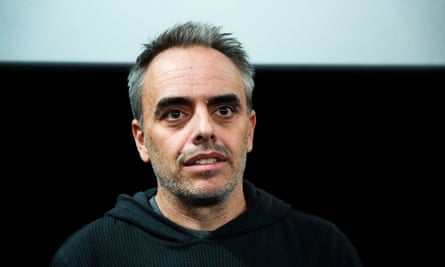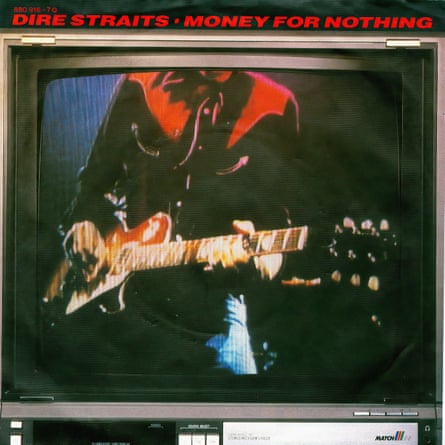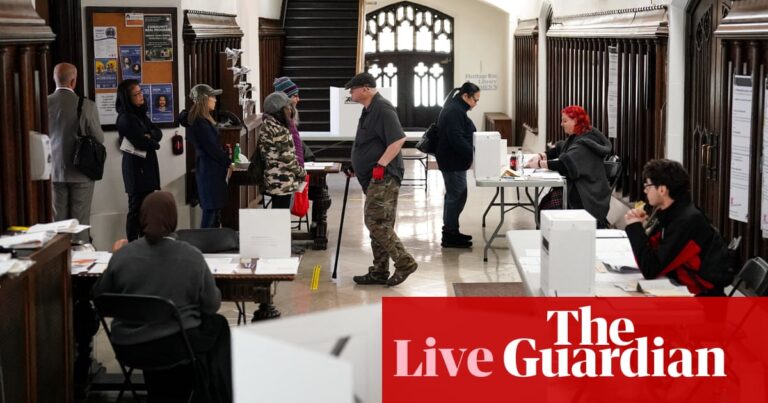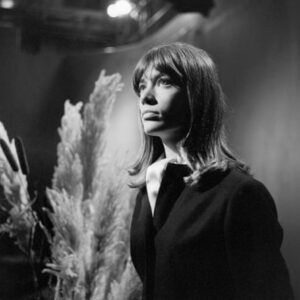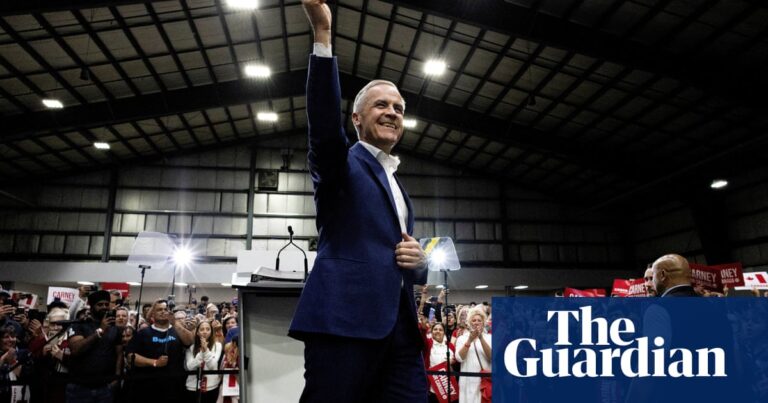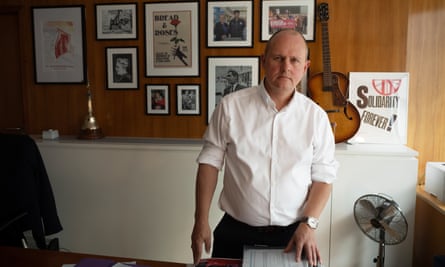Yé-yé was France’s homegrown response to rock’n’roll: pretty young singers – almost all female – performing a lightweight Francophone adaptation of American music with lyrics about teenage concerns. And at first sight, the 18-year-old Françoise Hardy was the epitome of a yé-yé girl. She was strikingly beautiful (“I was passionately in love with her,” recalled David Bowie decades later, “every male in the world, and a number of females, also were”); she was never off the airwaves of France’s premier yé-yé radio show, Salut les Copains, and never out of the pages of its accompanying magazine. Her first hit was the suitably innocent-sounding Tous les Garçons et les Filles, a wispy take on a rock ‘n’ roll ballad.
But it transpired that Hardy was a different kind of yé-yé girl. For one thing she wrote her own material, like her idol, the black-clad chansonnière Barbara. Eschewing the gauche attempts of France’s professional songwriters to mimic American rock’n’roll or translate its lyrics, 10 of the 12 tracks on her debut album were her own compositions, written with arranger Roger Samyn. This was an extraordinary state of affairs for pop music in 1962: the following year, the Beatles – the band generally credited with cementing the notion that artists could write their own material rather than relying on cover versions – would release their debut album, with just over half its contents penned by Lennon and McCartney.
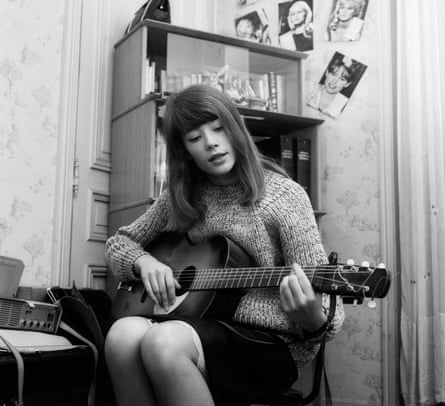
Hardy’s songs were invariably melancholy, which perhaps had something to do with her unhappy childhood. Her largely absent father was closeted, and eventually died, Hardy believed, after being assaulted by a rent boy. Her sister suffered with mental illness and killed herself in 2004. Hardy seemed diffident at best about commercial success and celebrity. In contrast to her bubbly peers, sadness seemed to seep out of her: no matter how lightweight the arrangements sounded, her voice brought a certain chilly tristesse to her releases.
Hardy came to find the arrangements a problem too, later professing to hate the music that made her famous: “I had such bad musicians, such a bad producer … I thought those recordings were terrible.” She wrested control of her own sessions, moving operations to Pye Records’ famous Marble Arch studio and surrounding herself with London’s hottest session musicians, future Led Zeppelin guitarist Jimmy Page among them. (His future bandmate, John Paul Jones, incurred Hardy’s wrath by attempting to make her arrangements sound more Gallic.)
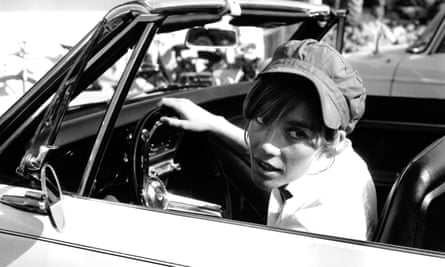
It goes without saying that this was not how yé-yé girls were expected to behave. They were supposed to be pretty but pliable receptacles for older male songwriters: witness poor, innocent teenager France Gall, unwittingly tricked into singing about blowjobs by dirty old Serge Gainsbourg on Les Sucettes (1966). But if Hardy’s early recordings were wistfully charming, the music she made after she took charge was something else. Her mid-60s albums (for some reason, they’re almost all titled Françoise Hardy) are fabulous, sophisticated pop confections that shift between beautifully orchestrated ballads and experiments with jangly 12-string folk rock, harpsichord-bedecked baroque pop and, occasionally, fuzzed-out guitar.
An English-language single, All Over the World, was a UK Top 20 hit in 1965. That Hardy didn’t make more impression on the charts here tells you more about the way audiences struggled to connect with anything not sung in English than the quality of her work. Nevertheless, she moved among the 60s rock aristocracy. It would be nice to think they recognised someone cut from the same groundbreaking cloth, but it is hard to avoid the impression that her looks sometimes overshadowed her talent. As if to prove Bowie’s point, Bob Dylan wrote lovelorn poems about her, and Mick Jagger declared her his “ideal woman”.
Hardy transitioned with ease into the late-60s singer-songwriter era, covering Leonard Cohen’s Suzanne on 1968’s Comment te Dire Adieu (with a certain inevitability, its original title was Françoise Hardy), an album to which Gainsbourg also contributed two particularly fine songs: the surprisingly effervescent title track, and the gorgeous L’Anamour. But it was her 1971 album, again called Françoise Hardy but known by fans as La Question, that proved her masterpiece. A collaboration with Brazilian singer-songwriter Tuca, it was sparse and dreamlike, its sound sitting somewhere between folk, jazz and bossanova, its breathily intoned lyrics dealing with both suicide and sensuality. It’s not exactly a highly contested field, but Mer may well be the most drowsily erotic-sounding song ever recorded about suicide.
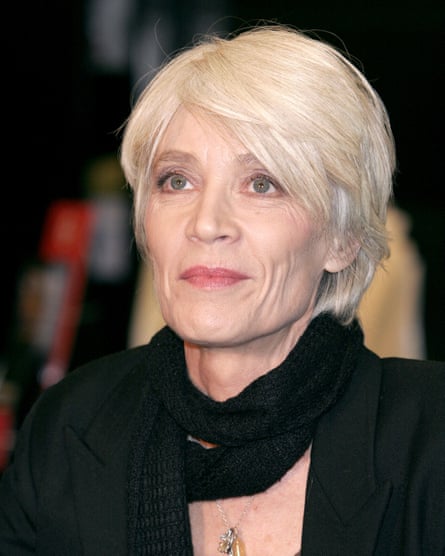
She followed it up by working with the cream of London’s folk-rock scene, including Richard Thompson, recording a stunning version of revered the acid-folk band Trees’ The Garden of Jane Delawney. In one of the great what-ifs of rock history, Fairport Convention producer Joe Boyd attempted to hook her up with another of his charges, Nick Drake. Hardy was a huge fan of the then largely ignored singer-songwriter, but a plan for the two to make an album together floundered when they met: the painfully shy Drake “came to the studio where I was recording in London, and he sat in the corner, almost hidden, and he never said one word”, recalled Hardy. “I was so full of admiration for his work, so I didn’t dare to say anything, and he didn’t dare to say anything.”
Her subsequent albums were rich and impressively diverse. She was as capable of essaying a Gallic take on country rock on the 1972 album Françoise Hardy, AKA Et si je m’en vais avant toi, as she was dealing in supremely cool jazzy funk on Gin Tonic (1980) or, perhaps most unexpectedly of all, grungy alt-rock (1996’s Le Danger). These aren’t albums terribly well known in the UK – the 90s anglophone re-evaluation of French artists, which saw Gainsbourg transformed from a novelty artist to a justly revered figure, seemed to stop short of Hardy’s oeuvre – but they deserve to be. And Hardy clearly had her admirers outside the French-speaking world. Blur collaborated with her on a version of To the End, renamed La Comedie; so did Iggy Pop, on a 2000 cover of the American Songbook standard I’ll Be Seeing You. Everyone from Cat Power to Weezer hailed her as an influence.
She remained a defiantly uncategorisable figure until the end. Her final album before ill health forced her retirement from music, 2018’s Personne d’Autre, found her writing French lyrics to music by Finnish indie band Poets of the Fall and confronting mortality head-on. You could just about imagine her singing the melody of one of its tracks, Train Special, as a yé-yé song in a different era, but its lyrics dealt with impending death. “What a person sings is an expression of what they are,” she told the Observer at the time of its release. “Luckily for me, the most beautiful songs are not happy songs. The songs we remember are the sad, romantic songs.”
Source: theguardian.com









